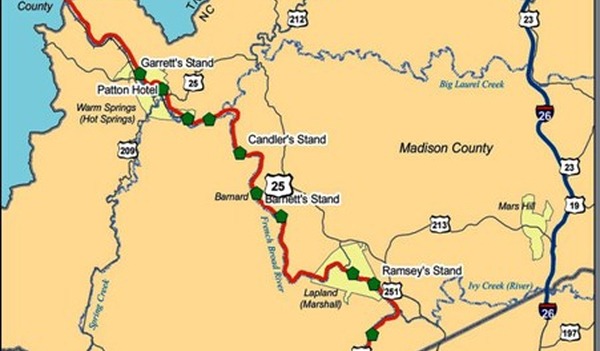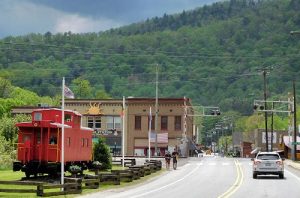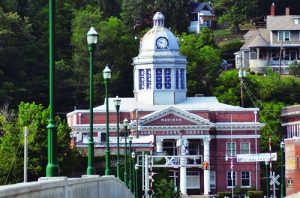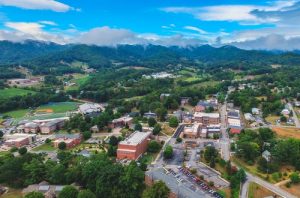Drovers’ Trail – The Road to the Market

Long before 1827 when the state constructed the Buncombe Turnpike, drovers had discovered that the easiest route to get their livestock to markets in Asheville and points south was along the French Broad River.
The Drovers’ Trail would have thousands of hogs, turkeys and cattle driven by at least two men—one in the front and the other leading up the rear. These men usually relied on young boys to help in this process. This created the need for “stands” along the way to serve as stopping points to rest at the end of the day. As hogs were the most numerous along this road and could only travel six to eight miles a day, that fact determined the placement of such stands.
It was not uncommon for ten to twelve droves, numbering from 300 to 1,000 to stop overnight and feed at one of these stands. David Vance had a stand at Lapland (now the town of Marshall) and he claimed to feed 110,000 hogs during one especially busy month. During the months of October, November, and December, there was almost a continuous string of hogs between the state line with Tennessee and the city of Asheville. Map included was created in 2007 by the Madison County 4-H GeoTech Club.



